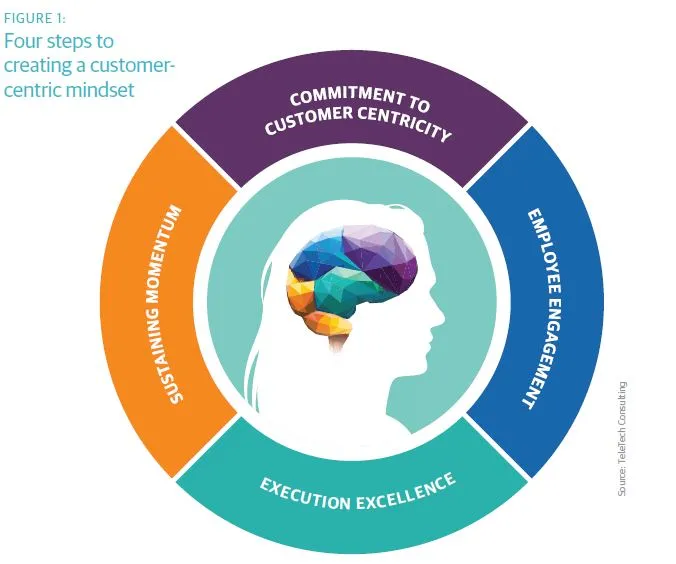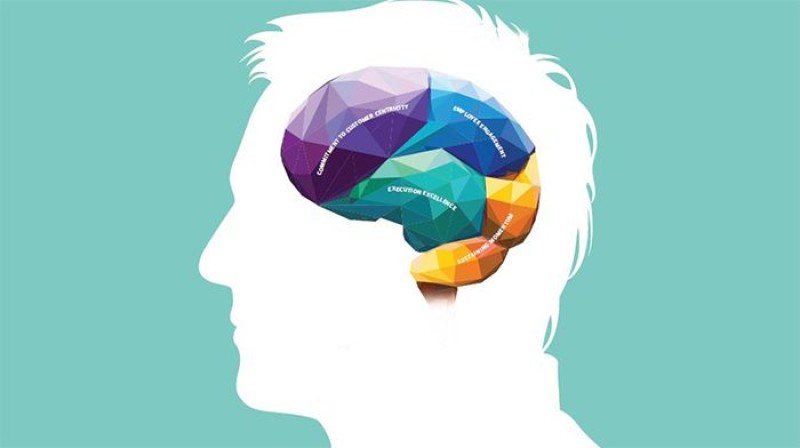Customer centricity is the engine that drives business. Big Data insights, mobile/social networks, and collaborative economies can’t thrive without a focus on consumers.
But what does it really mean to be customer centric?
For customer centricity to live and breathe, every channel that customers experience must be designed and executed to meet their best interests and serve their needs. And more important, the employees working in these different channels need the right mindset and intentions to create and sustain a high-performing, customer-centric culture.
Unfortunately, customer centricity is often more bark than bite, where the term is used as a buzzword without much real emphasis behind it. Forrester’s 2016 Customer Experience Index Report states that U.S. consumers rate only 18 percent of companies as “good” or “excellent” at delivering customer experiences. The largest number of brands, 59 percent, were rated as “ok,” and still nearly one quarter (23 percent) were rated “poor” or “very poor.”
Customer experience transformations often fail not because of the projects themselves, but because employee mindset isn’t there to spur adoption. Customer centricity can’t be dictated or mandated. It needs to become a natural part of the culture so it can take root across an organization. In our work with clients, we find there are four critical areas that help shift employee mindset to be more customer-centric: Commitment to customer centricity, employee engagement, execution excellence, and sustaining momentum.

Commitment to customer centricity
Like any other venture or project, commitment is crucial at the very beginning and will determine if the project will be successful. Key to commitment is a clear vision of what customer centricity means, along with alignment across the entire company so everyone understands how they play a part in enabling the vision.
A firm must make sure that its customer centricity vision is well established and understood by all employees. It must also be realistic for the company’s ambitions and market realities. The vision must embody not only the organization’s ambition and activity, but it also needs to resonate with people across the company. We recommend involving as many employees as possible, especially customer-facing ones, when crafting the organization’s vision. Ask customers to share some of their experiences, as well. Find out what makes interactions so special, and incorporate those unique circumstances into a vision that can be realized across the company.
To get started on creating a customer-centric mindset within your organization, look at your strategy and vision. Does it have the customer as the primary component? Is it well understood by everyone in the organization? Does each person know their role when it comes to customer interaction and satisfaction? These questions will help determine where to focus first. The accompanying quiz will help you ask the right questions internally and provide a measure of where your organization stands with its customer-centric mindset.
Employee engagement
Create buzz about change, involve individual and team contributors early on in the project, and show them why it should matter to them.
Identifying employees in the organization who display a particular focus on customers is a good place to start. Recognize and reward them as “champions,” employees who lead change by spreading the word of how the company is changing to become customer-centric based on individual, relatable stories.
Employees who go the extra mile and who are invested in the organization’s success represent a great starting point to accelerate the mindset shift. Focus rewards more on behavior than on results to celebrate the success of those displaying a champion behavior or going the extra mile, which in turn creates a model for what is expected of employees.
Execution excellence
Ensuring that you have the right people with the right skillset using the right technologies and processes will lead to a successful customer-centric strategy. Critically think about these questions:
• Do we have a detailed customer centricity action roadmap?
• What leadership and other activities are required to support being more customer centric?
• Are the critical success factors clear and prioritized?
• What capabilities do leaders require to execute the prioritized activities at an exceptional level?
• Are there any gaps?
• Are employees equipped with the tools, skills and knowledge they require to perform optimally?
Without an empowering mindset, employees and teams will find obstacles in even the best processes and technologies. Change can create doubt and uncertainty. Recognizing the progress of organizational and individual changes builds powerful belief and motivation among team members that their efforts are making a difference.
Sustain momentum
After a program has been launched, the real work starts. Sustainability secures the longer-term change in organizational culture. Customer centricity needs to be woven into the annual business planning process, employee acquisition, performance management, and succession plans to ensure your investment and efforts stick. Share metrics and milestones to recognize progress. These milestones and KPIs must be relevant to the customer’s experience (NPS, CES, CSAT, etc.), and with the company’s strategy (revenue targets, market share, customer churn, etc.). Plans and progress reports shared with the entire organization (all-hands calls, awards, town halls, etc.) are also critical to keeping forward momentum.
Conclusion
Being customer centric is a journey that organizations need to commit to if they want to be part of today and tomorrow’s reality. This journey is not an easy one, and is dotted with complexities and pitfalls. Like any journey, though, preparation is key, and having your people prepared with the right vision, alignment, mental state, and mindset in place will maximize your chances of reaching your destination.

















